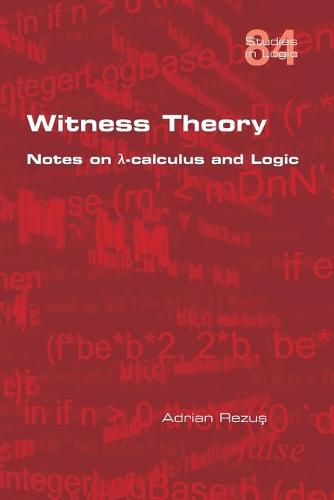Readings Newsletter
Become a Readings Member to make your shopping experience even easier.
Sign in or sign up for free!
You’re not far away from qualifying for FREE standard shipping within Australia
You’ve qualified for FREE standard shipping within Australia
The cart is loading…






This title is printed to order. This book may have been self-published. If so, we cannot guarantee the quality of the content. In the main most books will have gone through the editing process however some may not. We therefore suggest that you be aware of this before ordering this book. If in doubt check either the author or publisher’s details as we are unable to accept any returns unless they are faulty. Please contact us if you have any questions.
This book is concerned with the mathematical analysis of the concept of formal proof in classical logic, and records - in substance - a longer exercise in applied -calculus.
Following colloquialisms going back to L. E. J. Brouwer, the objects of study in this enterprise are called witnesses. A witness is meant to represent the logical proof of a classically valid formula, in a given proof-context. The formalisms used to express witnesses and their equational behaviour are extensions of the pure “typed’ -calculus, considered as equational theories.
Formally, a witness is generated from decorated - or "typed’ - witness variables, representing assumptions, and witness operators, representing logical rules of inference.
The equational specifications serve to define the witness operators.
In general, this can be done by ignoring the "typing’, i.e., the logic formulas themselves.
Model-theoretically, the witnesses are objects of an extensional Scott -model.
The approach - called, generically, "witness theory’ - is inspired from work of N. G. de Bruijn, on a mathematical theory of proving, done during the late 1960s and the early 1970s, at the University of Eindhoven (The Netherlands), and is similar to the approach behind the Curry-Howard Correspondence, familiar from intuitionistic logic.
For the classical case, the decorations - oft called "types’ - are classical logic formulas.
At quantifier-free level, the equational theory of concern is the -calculus with "surjective pairing’ and some subsystens thereof, appropriately decorated.
The extension to propositional, first- and second-order quantifiers is straightforward.
The book consists of a collection of notes and papers written and circulated during the last ten years, as a continuation of previous research done by the author during the nineteen eighties.
Among other things, it includes a survey of the origins of modern proof theory - Frege to Gentzen - from a witness-theoretical point of view, as well as a characteristic application of witness theory to a practical logic problem concerning axiomatisability.
$9.00 standard shipping within Australia
FREE standard shipping within Australia for orders over $100.00
Express & International shipping calculated at checkout
This title is printed to order. This book may have been self-published. If so, we cannot guarantee the quality of the content. In the main most books will have gone through the editing process however some may not. We therefore suggest that you be aware of this before ordering this book. If in doubt check either the author or publisher’s details as we are unable to accept any returns unless they are faulty. Please contact us if you have any questions.
This book is concerned with the mathematical analysis of the concept of formal proof in classical logic, and records - in substance - a longer exercise in applied -calculus.
Following colloquialisms going back to L. E. J. Brouwer, the objects of study in this enterprise are called witnesses. A witness is meant to represent the logical proof of a classically valid formula, in a given proof-context. The formalisms used to express witnesses and their equational behaviour are extensions of the pure “typed’ -calculus, considered as equational theories.
Formally, a witness is generated from decorated - or "typed’ - witness variables, representing assumptions, and witness operators, representing logical rules of inference.
The equational specifications serve to define the witness operators.
In general, this can be done by ignoring the "typing’, i.e., the logic formulas themselves.
Model-theoretically, the witnesses are objects of an extensional Scott -model.
The approach - called, generically, "witness theory’ - is inspired from work of N. G. de Bruijn, on a mathematical theory of proving, done during the late 1960s and the early 1970s, at the University of Eindhoven (The Netherlands), and is similar to the approach behind the Curry-Howard Correspondence, familiar from intuitionistic logic.
For the classical case, the decorations - oft called "types’ - are classical logic formulas.
At quantifier-free level, the equational theory of concern is the -calculus with "surjective pairing’ and some subsystens thereof, appropriately decorated.
The extension to propositional, first- and second-order quantifiers is straightforward.
The book consists of a collection of notes and papers written and circulated during the last ten years, as a continuation of previous research done by the author during the nineteen eighties.
Among other things, it includes a survey of the origins of modern proof theory - Frege to Gentzen - from a witness-theoretical point of view, as well as a characteristic application of witness theory to a practical logic problem concerning axiomatisability.